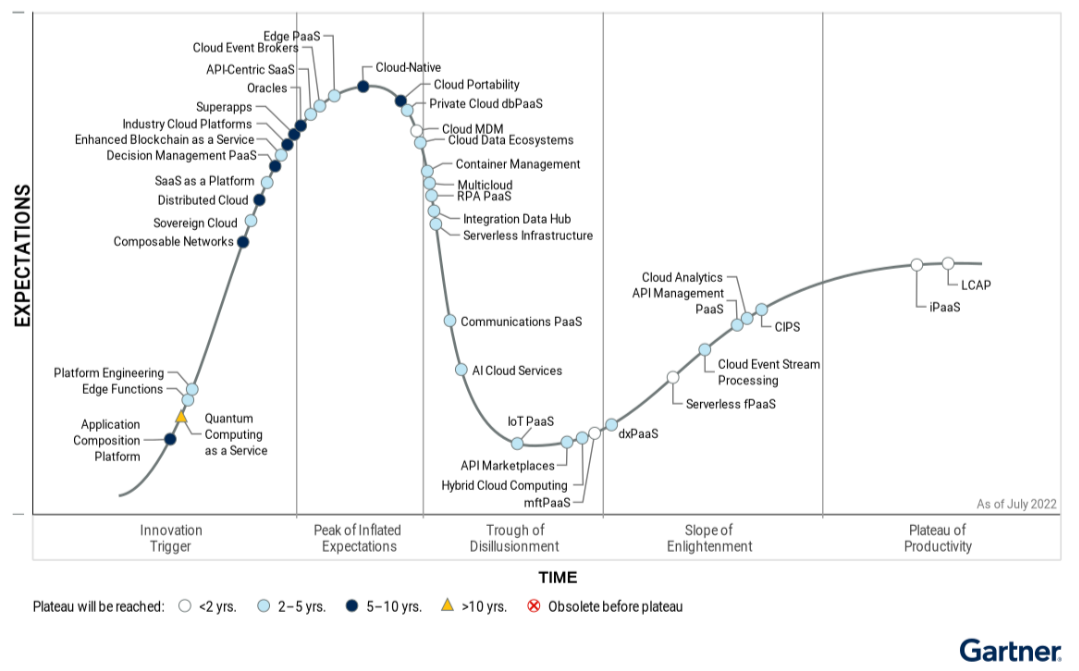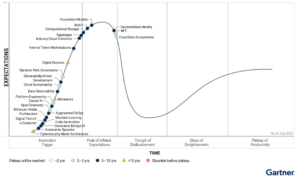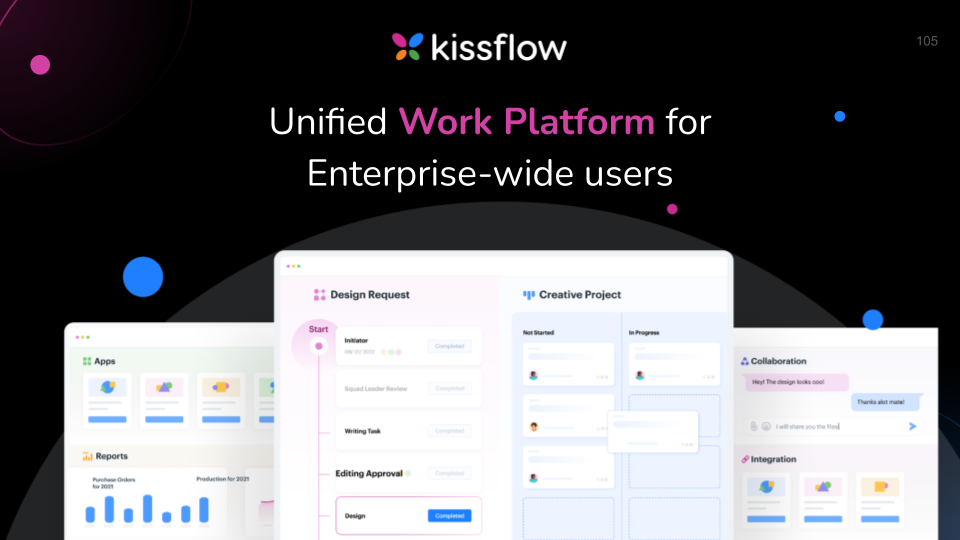Gartner Forecasts Worldwide Government IT Spending To Grow 5% In 2022
Worldwide government IT spending is forecast to total $565.7 billion in 2022, an increase of 5% from 2021, according to Gartner, Inc. Government IT spending in the Middle East and North Africa (MENA) region will total $13.3 billion in 2022, growing 1.8% from 2021.
“The last few years of enduring pandemic challenges have mobilized a wave of digital transformation activities in government organizations across the world,” said Daniel Snyder, director analyst at Gartner. “Governments are executing innovative activities by harnessing technology to streamline digital services, advance automation processes and evolve citizen experiences.”
In 2022, government IT spending is forecast to increase across all segments except internal services and telecom services. Continuing the trend from 2021, software is forecast to record the strongest growth across all segments in 2022. As legacy modernization continues to be a priority in government organizations, growth in the data center systems segment will continue to slow though the forecast period (see Table 1).
Table 1. Worldwide Government IT Spending, 2021-2022 (Millions of U.S. Dollars)
| 2021 Spending | 2021 Growth (%) | 2022 Spending | 2022 Growth (%) | 2023 Spending | 2023 Growth (%) | |
| Data Center Systems | 25,085 | 7.3 | 26,137 | 4.2 | 26,642 | 1.9 |
| Devices | 37,484 | 13.0 | 37,823 | 0.9 | 37,389 | -1.1 |
| Internal Services | 68,241 | -2.1 | 68,188 | -0.1 | 70,767 | 3.8 |
| IT Services | 191,841 | 10.7 | 204,206 | 6.5 | 220,997 | 8.2 |
| Software | 146,952 | 16.9 | 162,278 | 10.4 | 183,012 | 12.8 |
| Telecom Services | 69,190 | 1.1 | 67,102 | -3.0 | 67,193 | 0.1 |
| Total | 538,793 | 9.1 | 565,734 | 5.0 | 606,000 | 100.0 |
Source: Gartner (June 2022)
Governments continue to invest in critical application software that directly support end user interfaces driving strong growth in this segment. Spending on telecom services is set to decrease in 2022 as governments reduce spending on expensive legacy systems in favor of digital service delivery models.
“MENA governments will continue to increase their spending towards digitalization efforts in 2022,” said Apeksha Kaushik, principal analyst at Gartner. 2022 will be a pivotal year for CIOs as they strive to make public services more agile, resilient and responsive. The need to optimize and modernize government business processes and services remains as great as ever.
Table 2. MENA Government IT Spending, 2021-2022 (Millions of U.S. Dollars)
| 2021 Spending | 2021 Growth (%) | 2022 Spending | 2022 Growth (%) | 2023 Spending | 2023 Growth (%) | |
| Data Center Systems | 781 | 9.5 | 786 | 0.7 | 790 | 0.5 |
| Devices | 1,649 | 13.1 | 1,618 | -1.9 | 1,660 | 2.6 |
| Internal Services | 1,315 | -4.3 | 1,301 | -1.1 | 1,375 | 5.7 |
| IT Services | 2,860 | 10.6 | 3,134 | 9.6 | 3,474 | 10.9 |
| Software | 2,374 | 16.3 | 2,564 | 8.0 | 2,884 | 12.5 |
| Telecom Services | 4,162 | -4.0 | 3,974 | -4.5 | 3,925 | -1.2 |
| Total | 13,142 | 5.1 | 13,377 | 1.8 | 14,110 | 5.5 |
Source: Gartner (June 2022)
At the same time, the focus on delivering citizen centric service delivery has increased. Therefore it is not just about having better or smarter technology, but how you design the experience. Connecting the two ensures easier access to service activities for citizens/constituents, greater visibility to what they need, and gives the organization more insights to increase satisfaction for employees. A key component is understanding time scarcity and ensuring higher ROI for each action taken.
Anything-as-a-Service Model Emerges as Pay-As-You-Use Gains Momentum
Anything-as-a-Service (XaaS) is gaining popularity across government organizations as it provides better return on investment normalizing IT spend over time making budgeting for IT more predictable, while avoiding the accrual of technical debt. Gartner predicts that by 2026, most government agencies’ new IT investments will be made in XaaS solutions.
“The pandemic sped up public-sector adoption of cloud solutions and the XaaS model for accelerated legacy modernization and new service implementations,” said Snyder. “Fifty-four percent of government CIOs responding to the 2022 Gartner CIO Survey indicated that they expect to allocate additional funding to cloud platforms in 2022, while 35% will decrease investments in legacy infrastructure and data center technologies.”
The widespread use will enable more digitalization of services and building trust for adoption of digital government services. Adoption of government platforms has been seen as a means of sharing information and enhancing citizen inclusion and digital equity. Governments are integrating services in the form of mobile apps and moving with Total experience strategy to create seamless citizen/constituent experience that encourage digital transactions specially across the financial and health sectors.
With the ongoing talent challenges facing organizations, XaaS makes it easier for government organizations to find the right talent via XaaS operating models. XaaS delivery models require different internal IT skill sets and place less demand on the organization to develop or acquire emerging IT skills, which are often hard to find and difficult for governments to afford.
Gartner clients can read more in “Forecast: Enterprise IT Spending for the Government and Education Markets, Worldwide, 2020-2026, 1Q22 Update.”
Learn more about key government technology trends in the complimentary Gartner ebook Top Technology Trends in Government for 2022.
About Gartner for Information Technology Executives
Gartner for Information Technology Executives provides actionable, objective insight to CIOs and IT leaders to help them drive their organizations through digital transformation and lead business growth. Additional information is available at www.gartner.com/en/information-technology.
Follow news and updates from Gartner for IT Executives on Twitter and LinkedIn. Visit the IT Newsroom for more information and insights.
About Gartner
Gartner, Inc. (NYSE: IT) delivers actionable, objective insight to executives and their teams. Our expert guidance and tools enable faster, smarter decisions and stronger performance on an organization’s mission critical priorities. To learn more, visit gartner.com.













